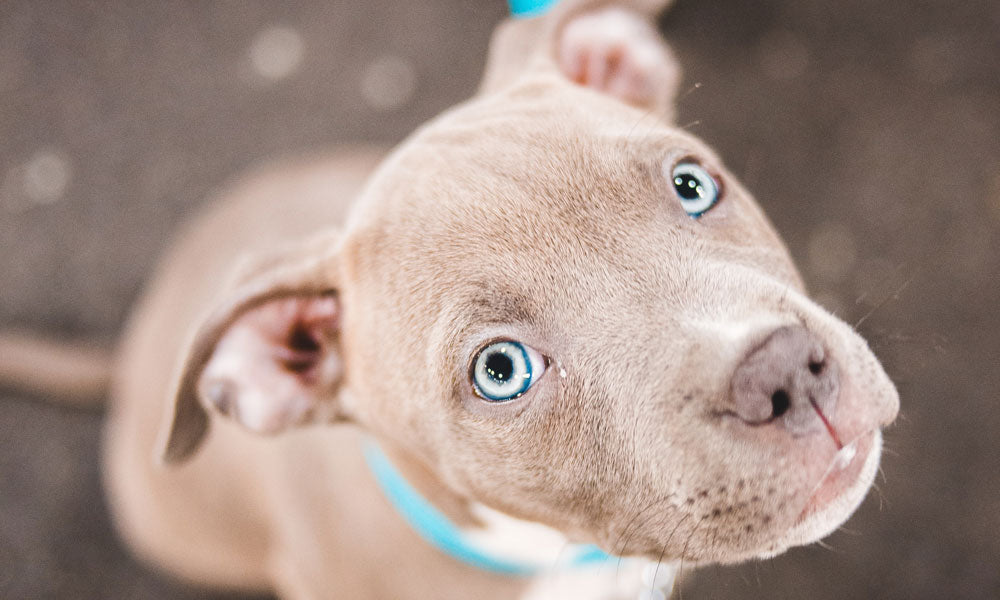
Why you need to stop your dog from pulling on the lead
According to the Pet Food Manufacturers’ Association, some 3.2 million UK households acquired a new pet since the start of the pandemic last year. As we’ve discussed previously on the blog, the coronavirus pandemic has seen more of us choosing to buy a puppy during the last year than ever before - but it's not all good news for new dog owners.
If you’re one of the people that got yourself a new pup during lockdown, there could be a chance that you could be injuring yourself by allowing it to pull on the lead. That’s according to Dr Peter Angell, a Senior Lecturer in Sport and Exercise Sciences at Liverpool Hope University, who says that if you find yourself getting dragged along the street by your pet you could be setting yourself up for a nasty injury such as a knee or shoulder strain - and that teaching your dog not to pull on the lead should be right at the top of your list when it comes to setting your dog training goals.
 Pup photo by Erik Mclean on Pexels
Pup photo by Erik Mclean on Pexels
Speaking to Metro, he explained why this problem is often overlooked:
“For some dogs, it seems that no matter how much training you give them, they always want to pull on the lead. I know this from personal experience!
“That’s bad when it comes to going on regular walks with them because your body is constantly offset while you’re moving, potentially leading to injuries. I wouldn’t be surprised if we see a lot of knee and shoulder problems this year caused by over-excited dogs and their enthusiastic owners.
‘If you can get your dog to stop pulling, I’d certainly recommend it, in order to protect your joints in the long run.
He suggests you need to be careful with your knees – as the Patellar tendon could be at risk from too much strain:
“It’s about the way you load the knee, and you may experience problems on the same side of the body where you hold the lead. Because you’re offset as you’re walking, you haven’t got an even gait. You’re taking bigger steps on the side the dog is pulling, which could mean your bodyweight doesn’t fall straight over the leg, and instead jars to one side.
“This unnatural planting of the weight could lead to increased loading of this patellar tendon, potentially causing issues.”
This kind of off-setting and overloading of the knee could also damage some of the related ligaments, too:
“The knee is actually really complex. It’s a really strong joint, most of the time, until you start moving it in a way that it doesn’t want to go. You have four main ligaments. The anterior cruciate ligament, or ACL and the posterior cruciate ligament sit one at the front, one at the back, and cross over to support the joint.
“ACL injuries are all too common and a PCL injury can be a real pain to recover from, even more so than an ACL tear. You also have the LCL and MTL – i.e., the lateral collateral ligament and the medial collateral ligament – which are on the outside and inside of the knee.
“You can potentially rupture any of these ligaments depending on how you twist. And if you’re off-setting your gait, and the pulling on the lead means you’re slightly inwardly-turned, I would say the chances are you’re more at risk of damaging the LCL or ACL, in my opinion.
“It’s also something that might build up over time, starting with just a niggle and then becoming worse. It’s just something I’d suggest dog walkers need to be aware of.”
 Pug photo by Ryan Antooa on Unsplash
Pug photo by Ryan Antooa on Unsplash
In addition to this Dr Angell suggests you need to keep an eye on your shoulder as well:
“Shoulder injuries might also be a concern, particularly if you’ve got a big dog.
“You might end up with damage to the rotator cuff, which is a group of muscles and tendons that surround the shoulder joint.
“As soon as any joint is being stretched away from the socket, you end up with an imbalance, from front to back, and any imbalance is a problem. With the shoulder, you could end up with what’s called “anterior roll”, where you’re slightly hunched forwards, which can cause pain through the shoulder and back.”
Dr Angell suggests that if you do experience any pain whilst walking your dog, you should seek advice from a physiotherapist as soon as possible. If you have a big dog that pulls a lot, try to walk with someone else so that you can share the strain. Take notice of your gait when you are walking and try to be aware of any stress you might be putting on the different areas of your body – particularly if you’re placing any kind of repetitive strain on your knee or shoulder:
“It’s all about being able to enjoy those wonderful walks with your dog without them leading to pain. Your body, and your pet, will thank you for it in the long run. But don’t beat yourself up if you do struggle to stop your dog pulling. We’ve all been there, trust me, and it’s been even trickier for dog owners since training and obedience centres have been closed due to the pandemic.”
 Sea dog photo by Erin Minuskin on Unsplash
Sea dog photo by Erin Minuskin on Unsplash
As Dr Angell has pointed out, the lack of dog training during the pandemic has made it more difficult for dog owners to access training classes, but it is not impossible. Some dog trainers are offering classes over Zoom and both Battersea Dogs Home and the RSPCA have got some excellent dog training and handling videos and information on their websites.
Does your lockdown puppy pull too much? Do you have any training tips? Or tips for avoiding injury? As always, let us know in the comments section below!
Main photo by Tucker Good on Unsplash
